The newest shopper survey information from the New York Federal Reserve had fascinating information.
“The New York Fed’s newest shopper survey discovered that expectations that shares will probably be greater within the subsequent 12 months rose from 39% to 41% since final month’s studying. On the identical time, inflation expectations dropped barely. Shopper sentiment numbers have not too long ago highlighted how sure demographics are thriving whereas others aren’t, however with the market close to all-time highs, it’s no shock that those that personal shares are feeling good.” – Yahoo Finance
The chart beneath reveals the annual change in shopper surveys of upper inventory costs. Unsurprisingly, buyers have turn into more and more exuberant about inventory costs at the side of the market rally that started in 2022.
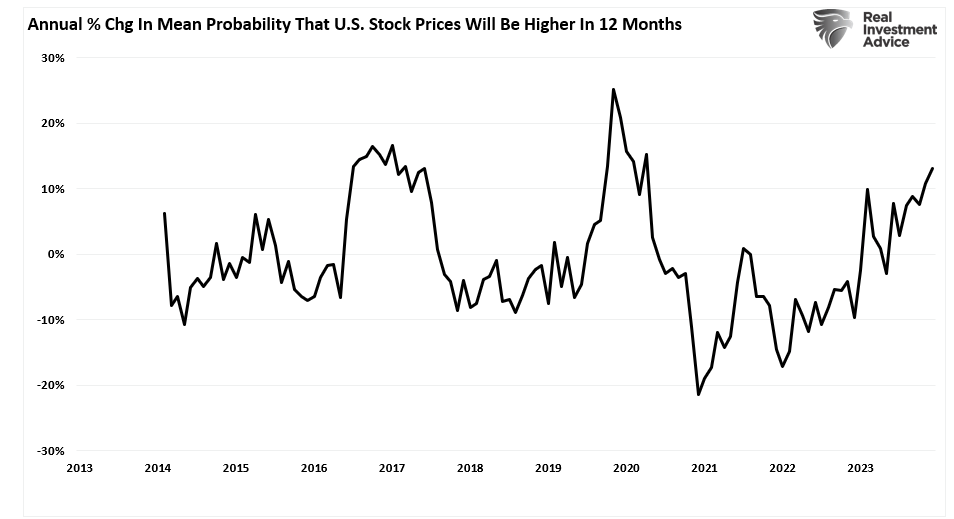
Nevertheless, Yahoo means that the rising bullish sentiment within the shopper survey displays the “haves and have-nots.” That assertion is comprehensible when contemplating the breakdown of family fairness possession and the discovering that the highest 10% of households maintain 85% of the equities.
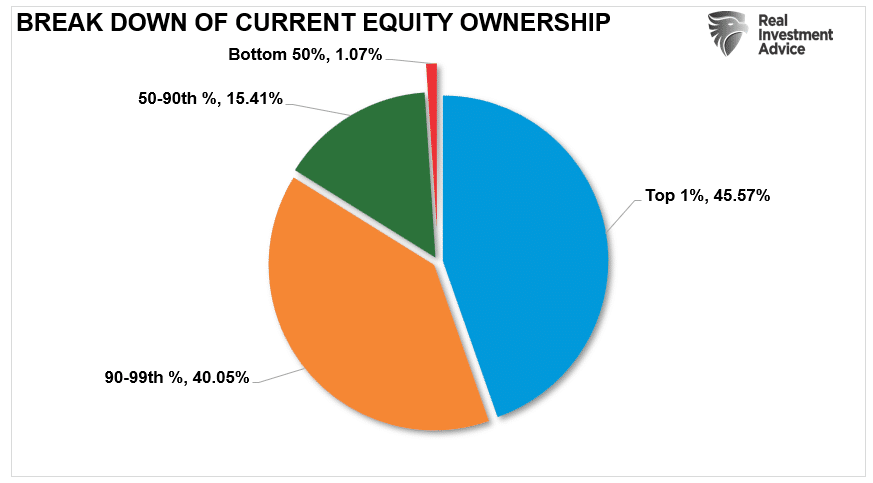

Nevertheless, shopper survey information reveals rising inventory market costs lifted confidence throughout age and revenue brackets. That ought to be unsurprising given the every day drumbeat of social and mainstream media highlights of the present bullish market.
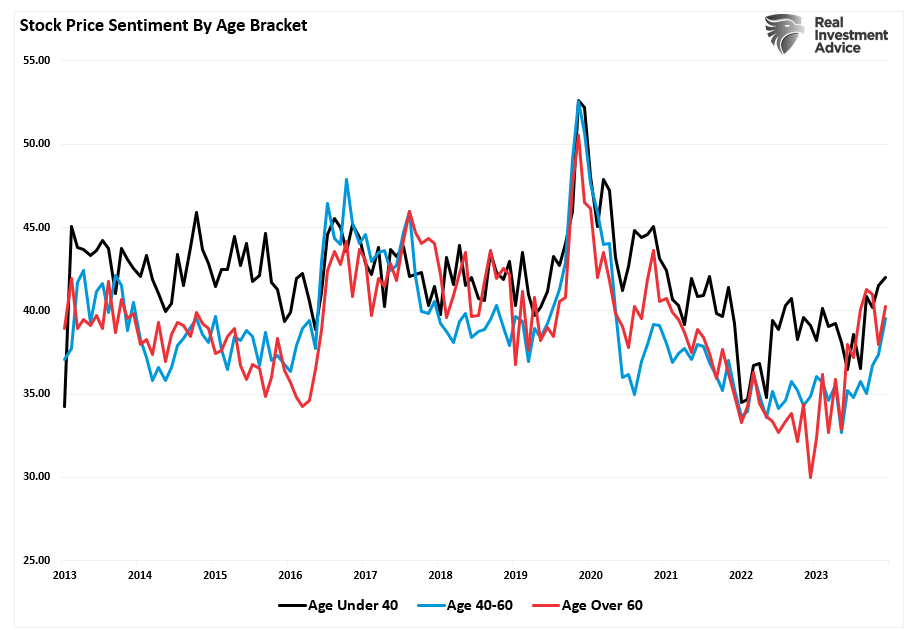

Moreover, when trying on the shopper survey information by revenue bracket, we see that the bottom and middle-income brackets have seen essentially the most outstanding advances in confidence.
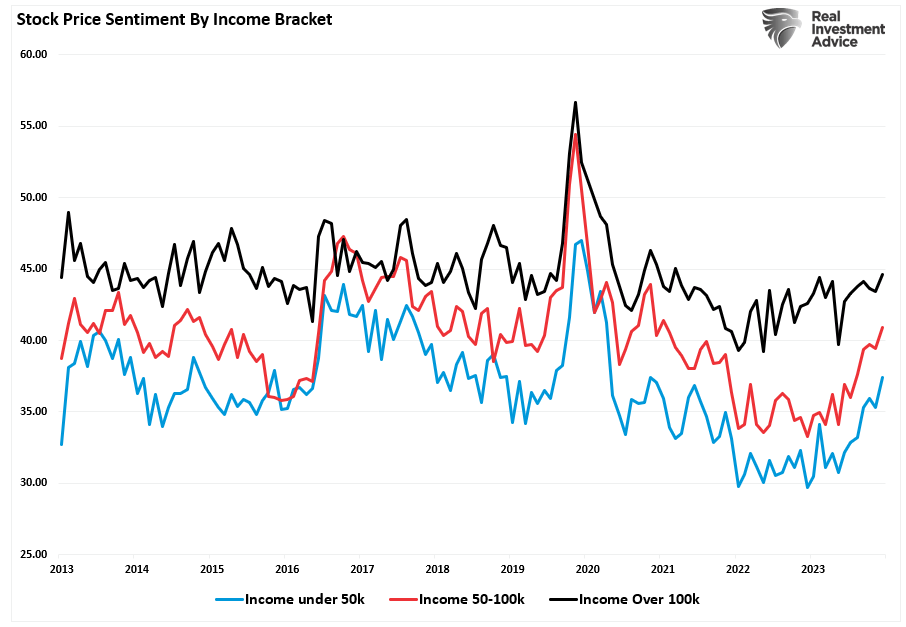

Given the popularization of the monetary markets by way of buying and selling apps like Robinhood mixed with a rising tide of social media commentary, it’s unsurprising that decrease revenue brackets have joined the fray hoping to “get wealthy fast.”
Nevertheless, a warning is buried within the rising tide of bullish sentiment.


Market Warning In Bullishness
To know the issue, we should first understand from which capital features are derived.
“Capital features from markets are primarily a operate of market capitalization, nominal financial progress, plus dividend yield. Utilizing John Hussman’s system, we will mathematically calculate returns over the subsequent 10-year interval as follows:
(1+nominal GDP progress)*(regular market cap to GDP ratio / precise market cap to GDP ratio)^(1/10)-1
Due to this fact, IF we assume that GDP might preserve 2% annualized progress sooner or later, with no recessions ever, AND IF present market cap/GDP stays flat at 2.0, AND IF the dividend yield stays at roughly 2%, we get ahead returns of:
(1.02)*(1.2/1.5)^(1/10)-1+.02 = -(1.08%)
However there are a “entire lotta ifs” in that assumption. Most significantly, we should additionally assume the Fed can get inflation to its 2% goal, scale back present rates of interest, and, as acknowledged, keep away from a recession over the subsequent decade.”
But, regardless of these important elementary elements, retail buyers are once more throwing warning to the wind. As proven, family fairness possession has reverted to near-record ranges. Traditionally, such exuberance has been the mark of extra necessary market cycle peaks.
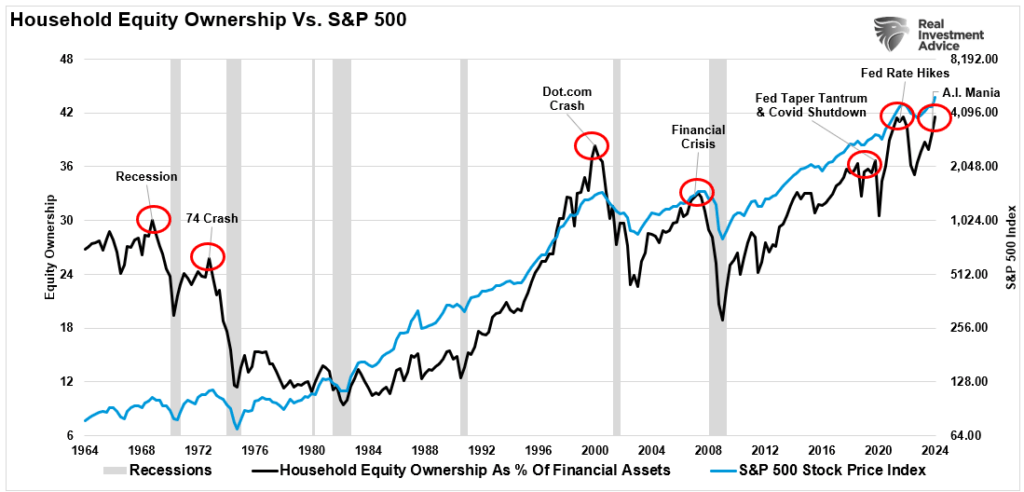

If financial progress reverses, the valuation discount will probably be fairly detrimental. Once more, this has been the case at earlier peaks when expectations exceeded financial realities.


Bob Farrell as soon as quipped buyers have a tendency to purchase essentially the most on the high and the least on the backside. Such is just the embodiment of investor conduct over time. Our colleague, Jim Colquitt, beforehand made an necessary statement.
“The graph beneath compares the typical investor allocation to equities to S&P 500 future 10-year returns. As we see, the info may be very properly correlated, lending credence to Bob Farrell’s Rule #5. Observe the correlation statistics on the high left of the graph.”
The ten-year ahead returns are inverted on the fitting scale. Such means that future returns will revert towards zero over the subsequent decade from present ranges of family fairness allocations by buyers.


The reason being that when investor sentiment is extraordinarily bullish or bearish, such is the purpose the place reversals have occurred. As Sam Stovall, the funding strategist for Customary & Poor’s, as soon as acknowledged:
“If all people’s optimistic, who’s left to purchase? If all people’s pessimistic, who’s left to promote?”
The one query is what ultimately reverses that psychology.


Exuberance Fails With Actuality
Unsurprisingly, fairness markets are rising at the moment. Such is especially the case as expectations for earnings progress have surged, with analysts anticipating close to 20% annualized progress charges over the subsequent 18 months.
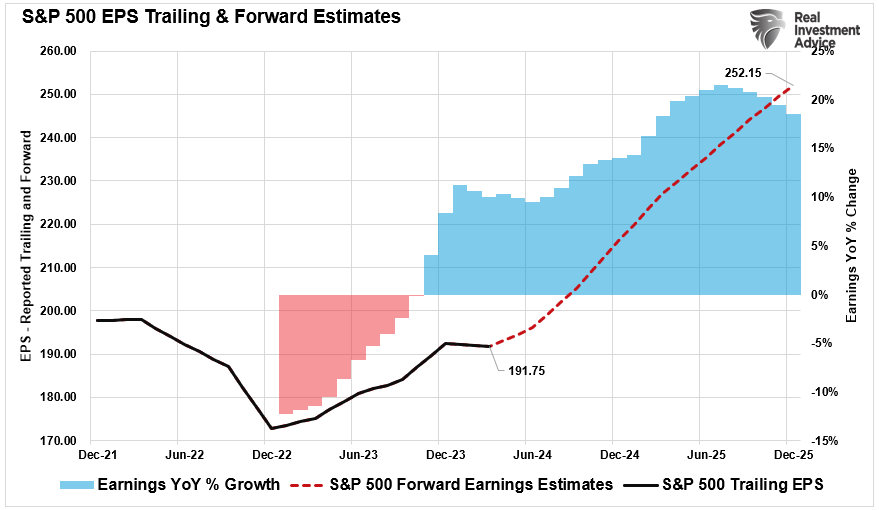

On the identical time, firms have engaged in huge share buyback applications, which have elevated costs and reported earnings per share by decreasing the variety of shares excellent.


Nevertheless, as financial progress slows, revenue margins will start to revert, and disinflation eats into earnings. Revenue margins are tied to financial exercise.
“Revenue margins are in all probability essentially the most mean-reverting collection in finance. And if revenue margins don’t mean-revert, then one thing has gone badly unsuitable with capitalism. If excessive income don’t entice competitors, there’s something unsuitable with the system, and it isn’t functioning correctly.” – Jeremy Grantham
Traditionally, when the market trades properly above precise income, there has all the time been a mean-reverting occasion to realign expectations with financial realities.


Many issues can go unsuitable within the months and quarters forward. That is significantly true when financial progress and unemployment are slowing.
Whereas the buyer survey may be very bullish on the outlook for persevering with asset value will increase, that sentiment is predicated on the “hope” that the Fed has all the pieces below management. Historical past suggests there may be greater than an affordable probability they don’t.
Put up Views: 2,744
2024/06/18